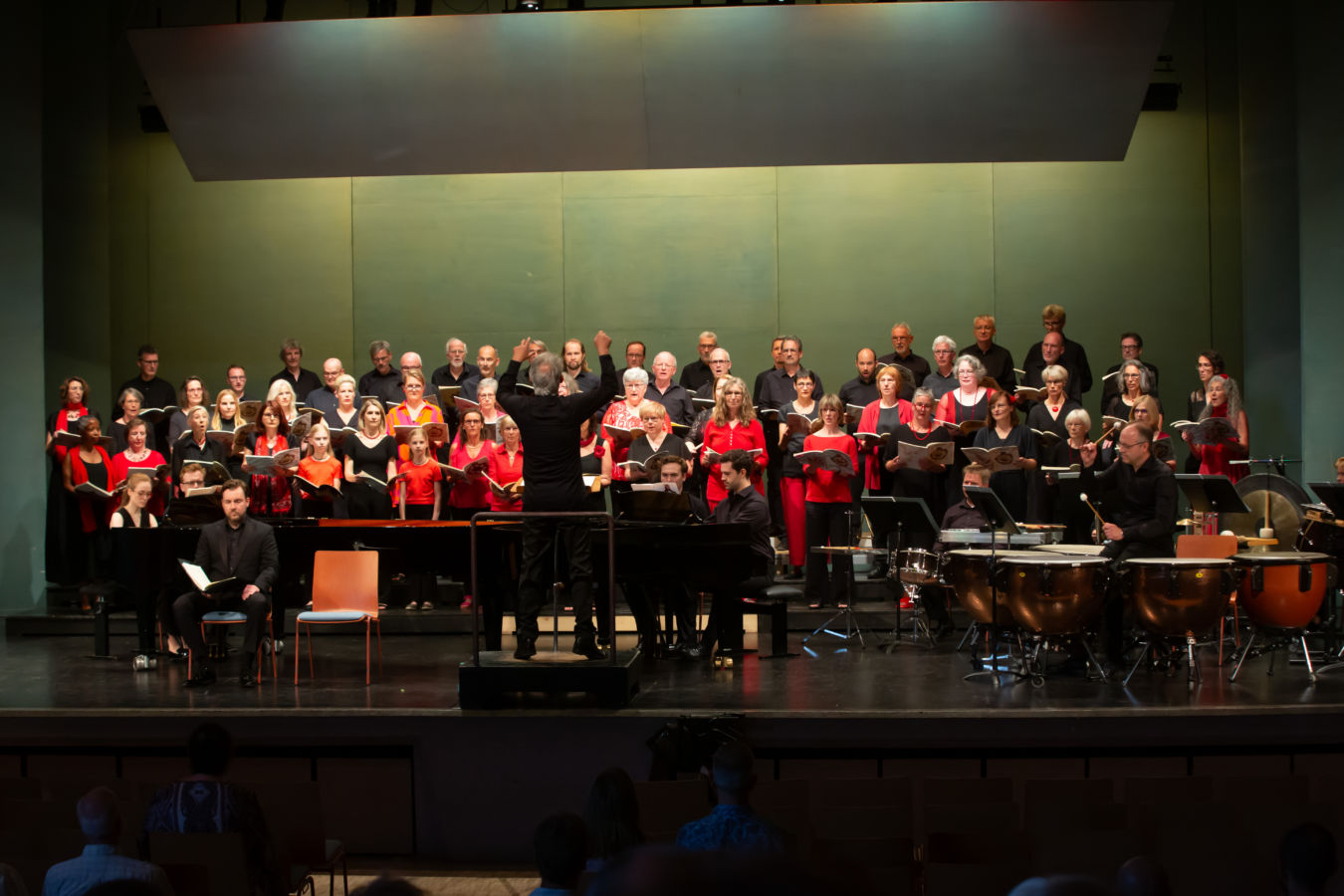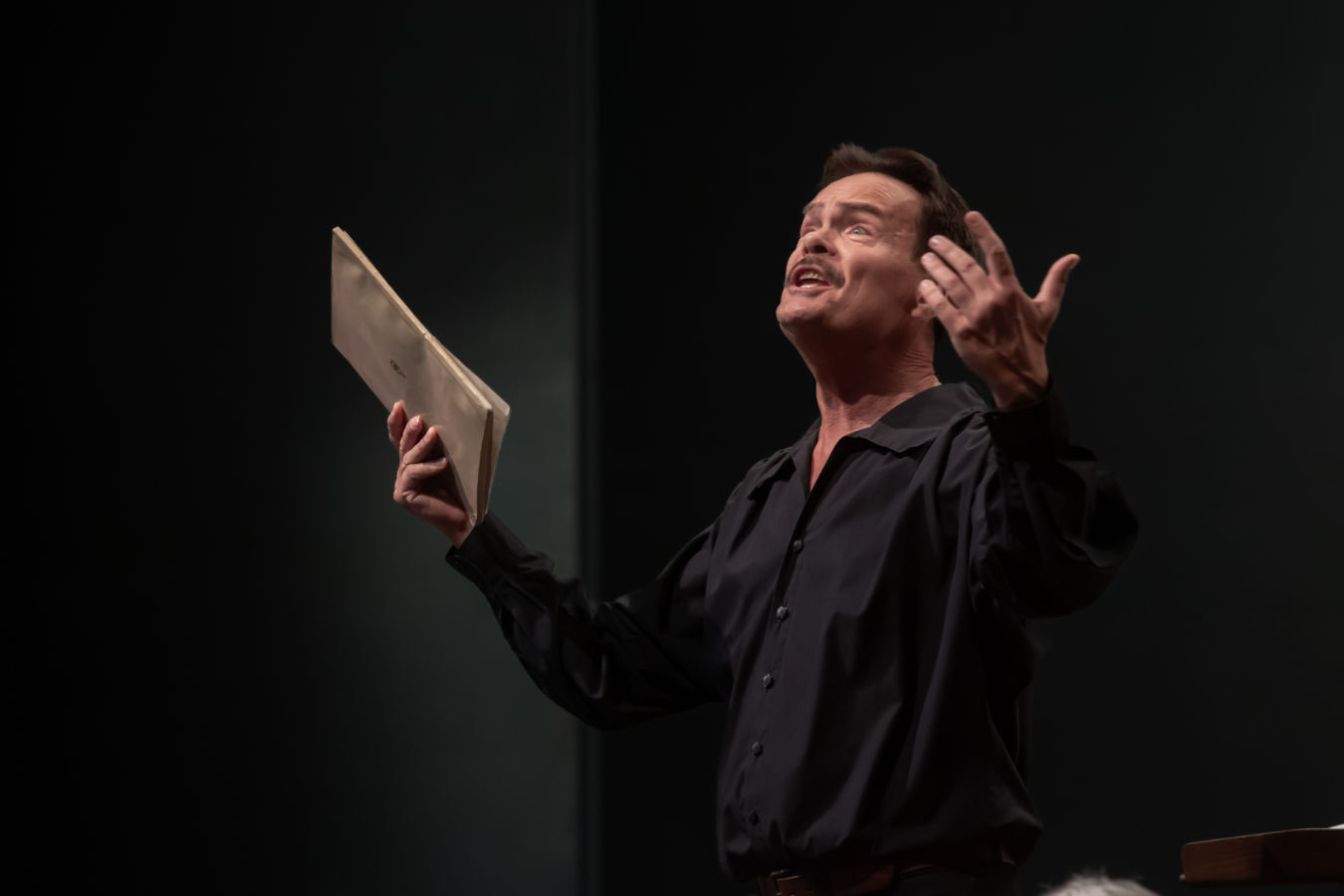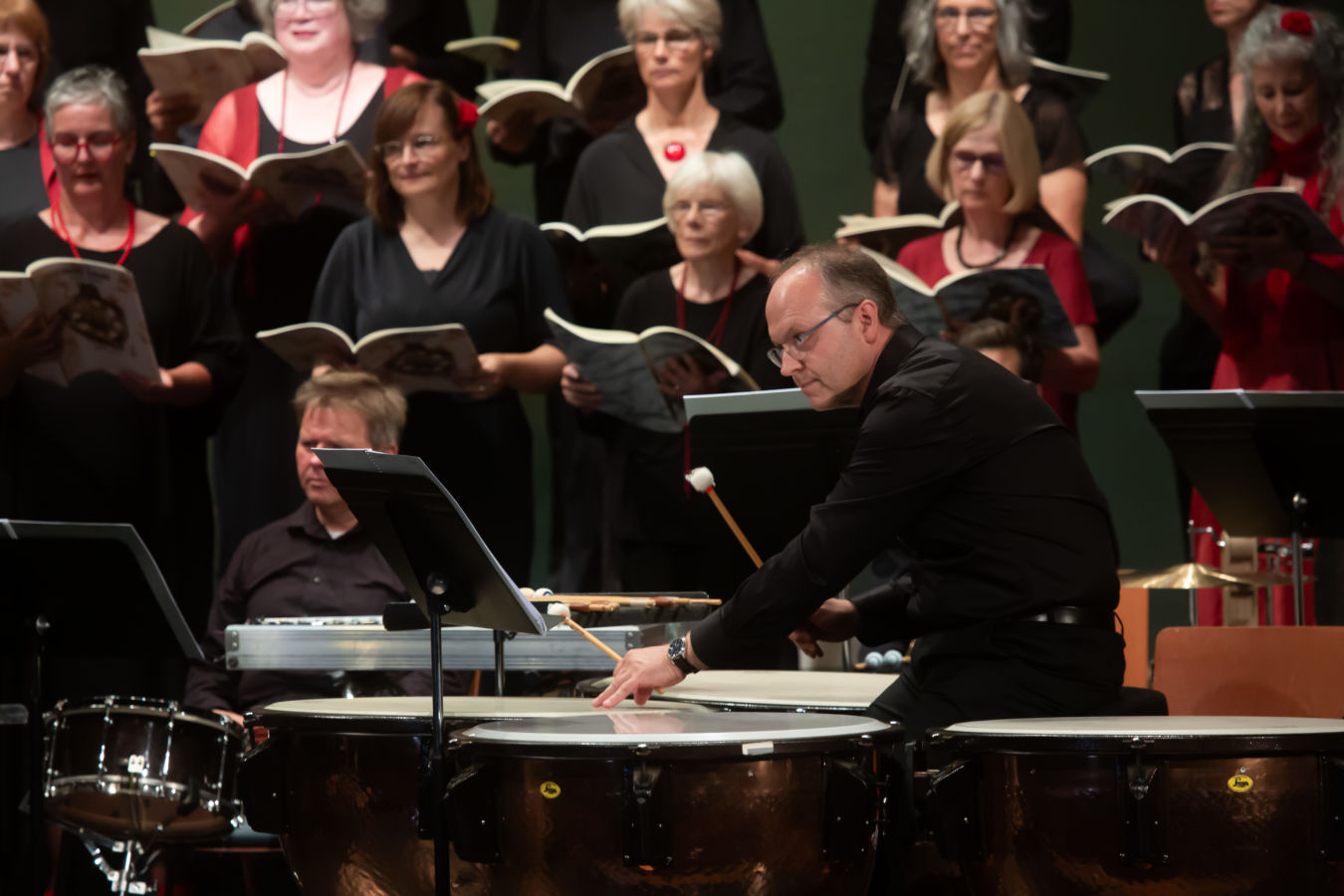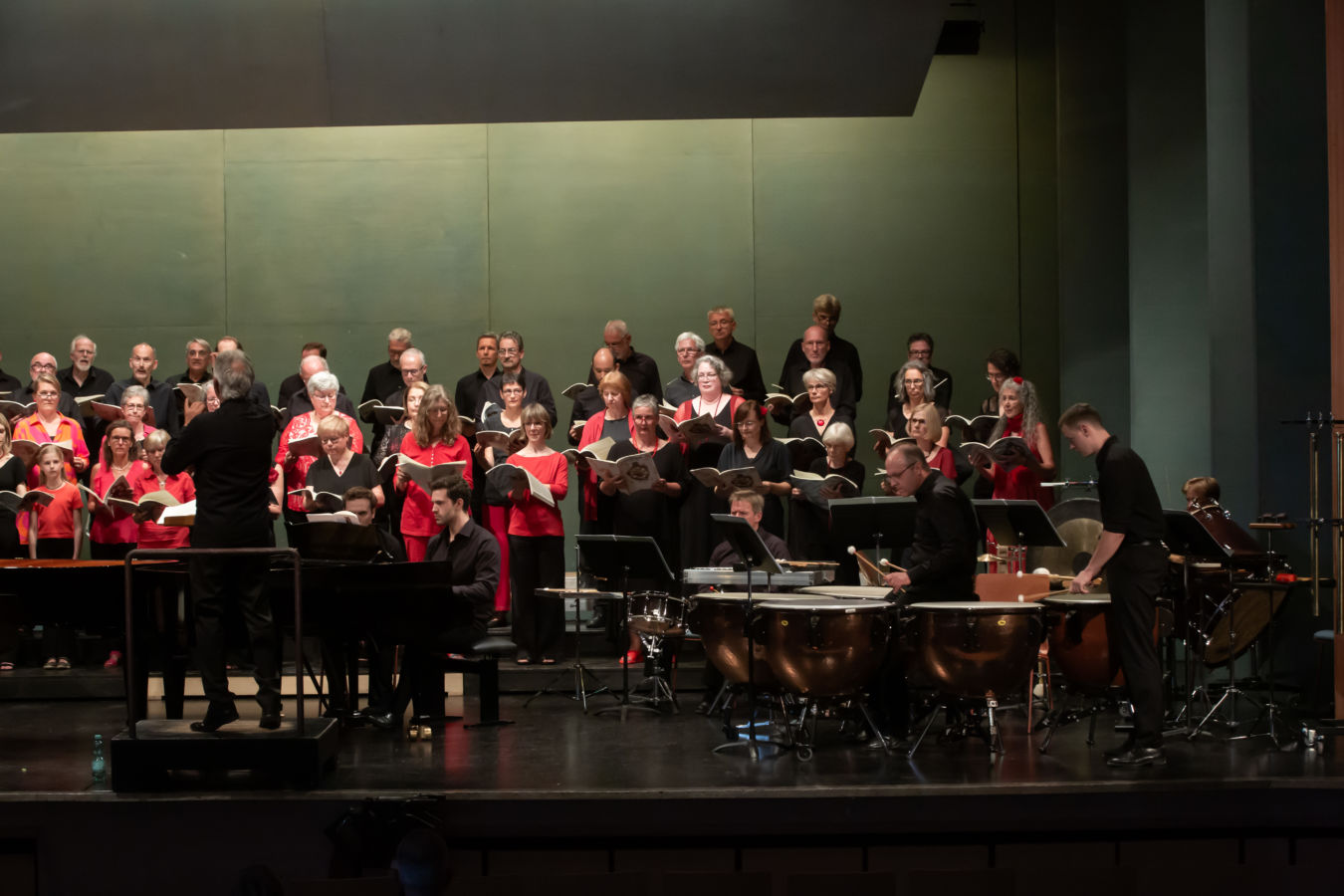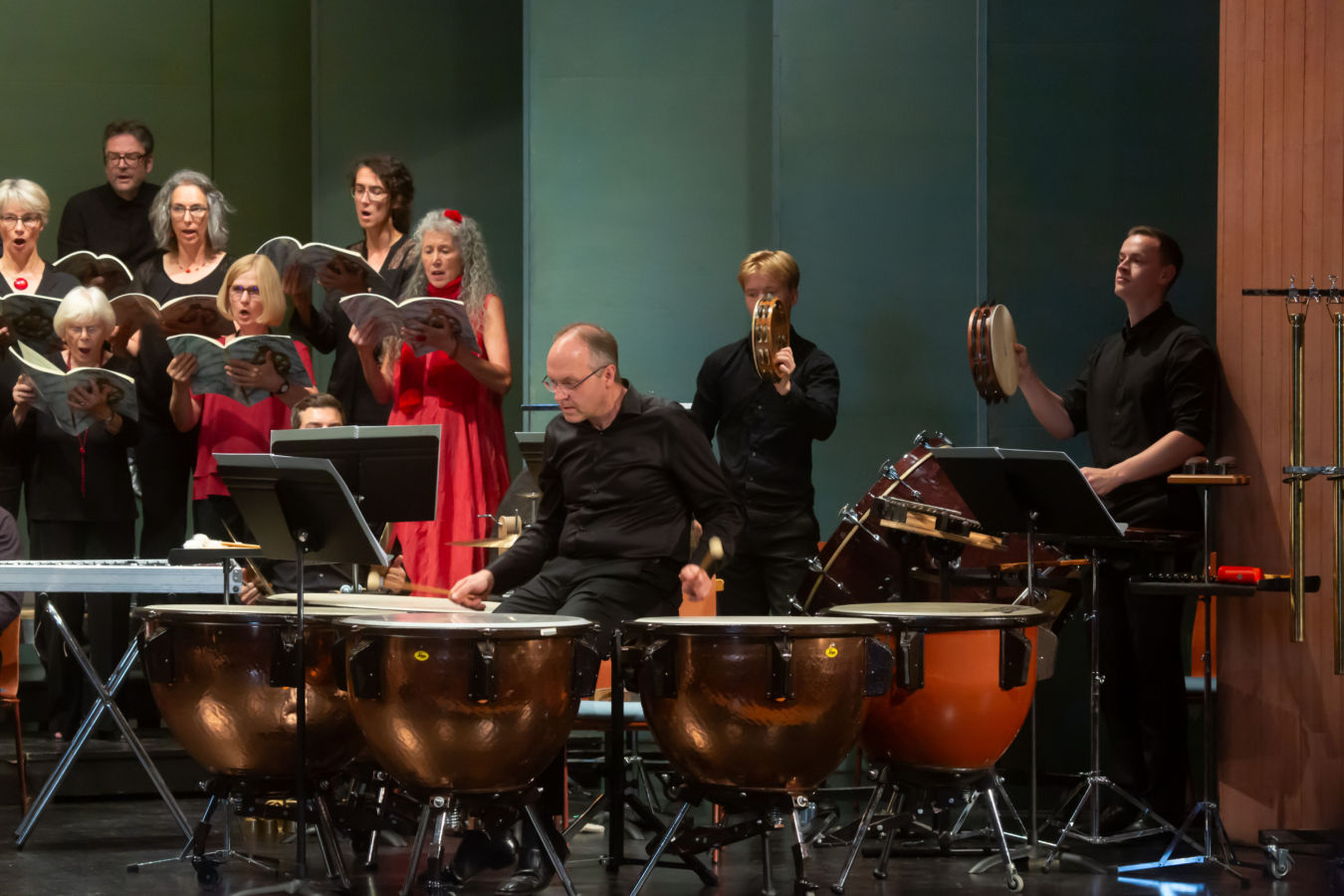For the choir, Carl Orff is known to have built into his legendary work a whole series of „vocal-musical hurdles“ that have to be jumped. Long sustained, „highest“ registers in the sopranos and tenors, tricky rhythmic complications, many voice divisions (up to eight-part harmony), demanding male choruses, fast tempi, many tempo changes, lots of text for the choir and so much more. But the soloist parts are also „on the edge of the possible“. The baritone arias demand from the soloist a vocal range above any baritone bandwidth and a breadth of expression that demands the utmost. The same applies to the soprano numbers. It would actually need three singers with different soprano profiles. And the tenor sings throughout in a „murderous“ tenor register with high „C „s non-stop. That the percussion group and the two pianists also have highly virtuosic tasks to perform becomes audible and visible in every performance of the work.
An extraordinary concert experience (1)
The Stuttgart Oratorio Choir, with its 23 men and 32 ladies, delighted the audience as soon as they appeared on the beautifully lit stage of the very impressive concert hall of the Uhlandshöhe Waldorf School. With black and red colour accents, they had set themselves apart from the classic black of the otherwise usual church performances with sacred oratorios, in keeping with the theme.
But when Maestro Enrico Trummer gave the opening beat of the famous Fortuna initial with a precise opening gesture, the seriousness of the inexorable goddess of fate was palpable and the concentrated high tension of all the actors was immediately transmitted to the hall. Impressive intonation of the choir, exemplary articulation, dynamic discipline and the most precise interplay of choir and orchestra made the lament over Fortuna the dramatic, suspenseful prelude Orff intended, and the audience responded with a first wave of enthusiastic applause after the powerful final fermata. The continuation Fortunae plango – introduced by the excellently disposed male choir – was equally captivating with pinpoint precision and relaxed vocalisation. The women’s choir blended ideally with the men’s voices in the further course. Grandiose orchestral postludes provided rousing finales.
Primo vere
Speaker Rainer Wolf now introduced the first part of the work with emphatic gestures and entertaining texts of his own.
This first part – dedicated to the awakening spring and playing entirely „outdoors“ – offers a wealth of creative possibilities for choir, soloists and instrumentalists with numerous colour changes and gradual intensifications. Trummer used the possibilities of the score with impressive musical realisation: gossamer choral sounds of the choral groups characterised the dawning spring in Veris leta, whereby the organic point sounds between the stanzas sounded amazingly synchronous together through highly precise conducting.
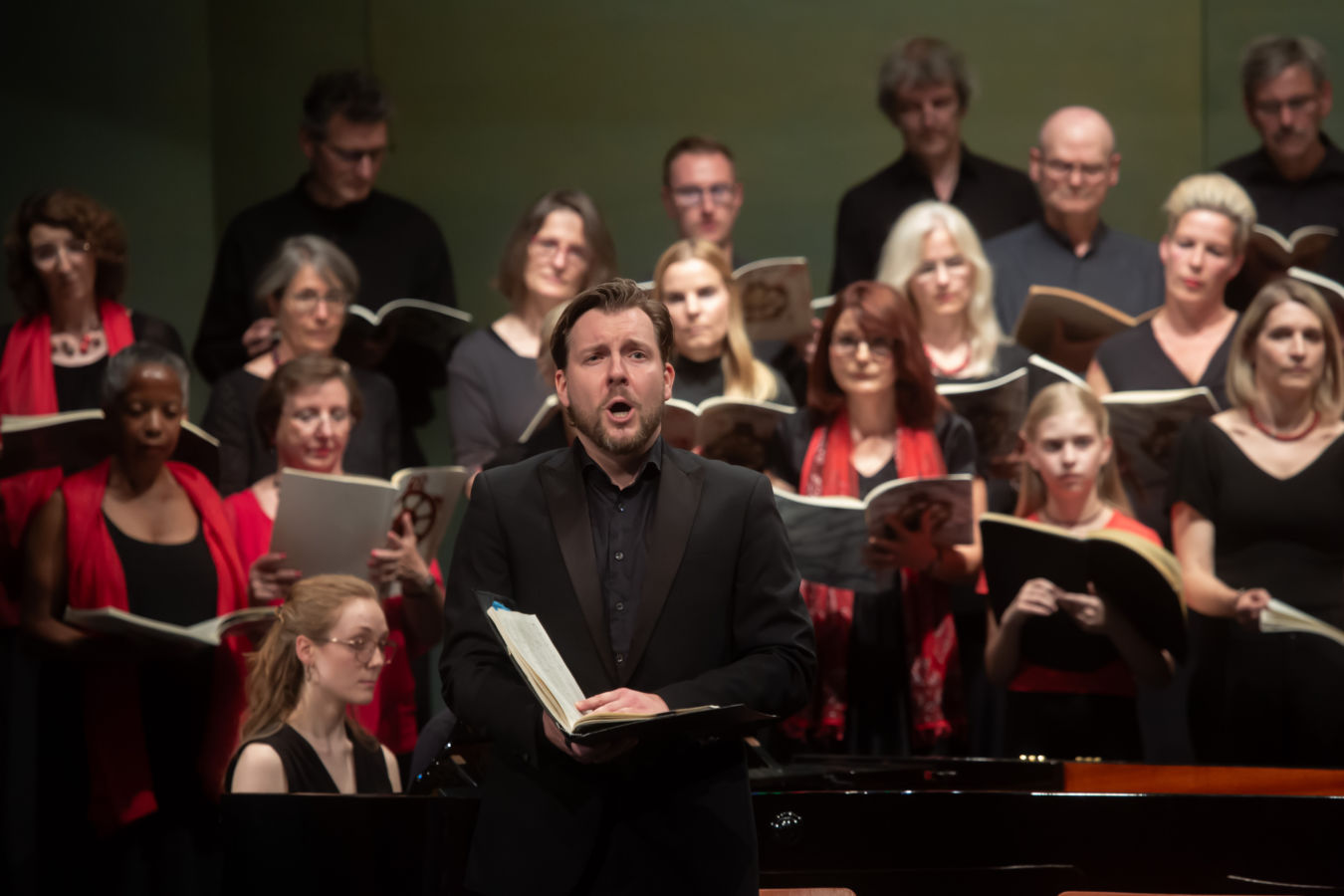
Kai Preußker convinced with varied colouring and excellent vocal fit, giving this number a highly interesting and inspired interpretation. Herzerfrischend danach der Tenor-Einsatz beim Ecce gratum: With temperament and vocal variance the ensemble designed this varied and contentwise summarizing number again with playful ease and high concentration extremely tonally beautiful.
Uf dem anger
The dance in the village squareUf dem angeris a brilliant number for the orchestra: the humorous play with the „Zwiefachen“ requires high playing skill and precise conducting. The pianist duo Julia Anna Koch and Giulio Ferré with the timpanistChristoph Wiedmannand his percussion ensemble interpreted this ravishing instrumental piece with unflagging accuracy and joy of playing.
Legendary choral numbers
Floret silva – the loss of the beloved – demands not only high concentration from the choir, but also the continuation of the refined play with the „twofold“ bar changes. The three-part women’s choruses displayed a distinct beauty of sound in the long sustained chords on the high „b“ and one could only marvel at how easily and flexibly the choral ladies translated the conductor’s intentions into sound. Even the witty and quite demanding hinc hinc hinc- tenor entry came easily and vividly portrayed the „fleeing“ lover. In Chramer, gip die varwe mir the transitions between the melodic sections and the humming parts were particularly beautiful and smooth. Wonderfully softly sung was the respective women’s choir conclusion Look at me….
Rie
The girls‘ round dance opens this multi-part number. The orchestra and conductor interpreted this instrumental prelude with gestural grace. Exuberant temperament then in the „Mocking Choir“ Swaz hie gat umbe. Sovereign in the fast dialogue between women’s and men’s choir, the balls were playfully thrown back and forth.
The quiet beginning of the altos in Chume, chum geselle min was atmospheric and was answered just as touchingly by the four-part male choir. The finale of the spring part was again brilliant: Highly virtuosic chord repetitions by the piano duo imitated the blaring trumpet fanfares and the choir set its Were diu werlt alle min in the hall with great gesture. Impressively and flawlessly, the high choir voices set their high „c“, and the rousing postlude was crowned by a spot-on „crack of the whip“ from the orchestra with the choir’s synchronised Hei . Spontaneous cheers from the audience were the direct response to this magnificent performance of the Spring Part.
Part 2 of the concert review will follow shortly…
Image rights: Timo Kabel

